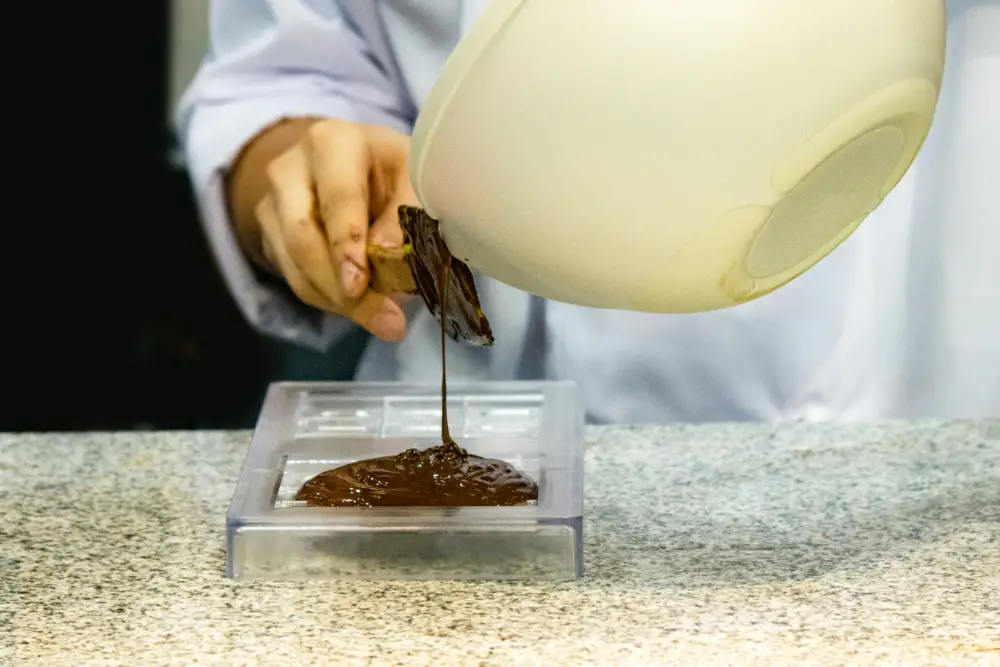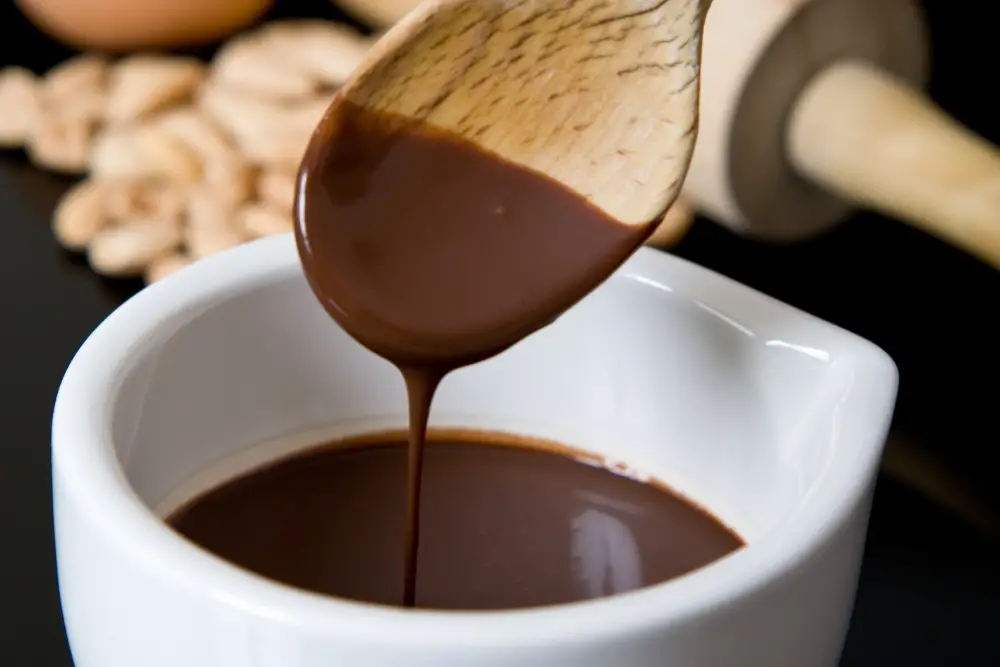Everyone loves fudge.
It’s sweet, it’s delicious, and it’s easy to eat as a little treat at any time of the day.
So it comes as no surprise that a lot of people want to try making their own fudge. It’s pretty easy to do and it’s a lot of fun – but sometimes, it can be tricky figuring out the little tricks and tips that help make the perfect fudge.
One problem a lot of people run into is when letting the fudge set. Is it better to cover the fudge while it sets? What with? Should you let it set while in the refrigerator or leave it out at room temperature?
Well, don’t you worry – we are here to help you out!
Here are some tips and information that can help you find the right way to set your fudge, including if you should cover your fudge and where to leave it to set.

Should You Cover Fudge While It Sets?
Setting your fudge is one of the most important parts of the recipe as it involves waiting for your fudge to harden.
If your fudge does not set properly, then you could end up with a gooey mess that you cannot divide up and serve.
It’s very easy to start panicking when you notice that your fudge is either taking too long or refusing to set – and that is when everyone starts looking for tips and tricks to help speed up the process and try and save their fudge.
You may have heard that you should cover fudge while it is setting – but this is not actually true.
Leaving fudge to set involves leaving it to cool down and harden. If you try covering fudge during this process, then you will only be trapping the heat in and prolonging the setting process. So, covering your fudge while it sets is not recommended.
When leaving your fudge to set, you should leave it uncovered so the heat can escape the fudge easier. Otherwise, you will only be disappointed to come back to your fudge and find it still moist and gooey.
What To Use To Cover Fudge For Storage
So if you should not cover your fudge while it sets, then why have you heard about covering fudge with plastic wrap or wax paper?
Well, it could be you are mixing this tip up with how you should store fudge after it has set.
After you have finished making your fudge and it is ready to be eaten, it is very rare that you will use up a whole batch of fudge straight away. Most of the time, you will have some left over or you will want to keep some to eat at another time.
And so, the recommended way to store your fudge is to cover the dish with plastic wrap or separate your pieces using wax paper and seal them in an airtight plastic container. This would explain where a lot of people get the idea to cover their fudge – except that this is meant to be done after the fudge has properly set.
Covering your fudge with plastic wrap before it has had time to properly set will only leave you with a moist mess that is difficult to divide up and serve. Covering your fudge with plastic wrap after it has properly set and gone hard will help you keep moisture away from the fudge so it will stay fresh and last longer.
When storing fudge, it is important to keep it away from three things: light, high temperatures, and moisture.
All three of these things will ruin your fudge’s taste and texture before you have a chance to eat it, so either cover your fudge or store it in an airtight container to keep out moisture.
Also, remember to keep your fudge somewhere cool and out of direct sunlight – like in a cabinet or in the refrigerator if you plan on eating your fudge relatively soon.

Setting Fudge: Refrigerator Vs Room Temperature
Now that you know that you cannot cover your fudge while it sets, you are left with two choices: leave it out at room temperature or pop it in the refrigerator to try and speed up the setting process.
A lot of first time fudge makers may be tempted to leave their fudge set in the refrigerator as most fudge recipes recommend you leave your fudge set overnight. So, if you are impatient, it is tempting to try to shortcut your way to some delicious fudge pieces by leaving your fudge in a cooler environment.
But does this method work?
Well, it does but it comes at a cost.
Cooling your fudge down too quickly will result in the sugar crystallizing far too rapidly. This will affect the texture of your fudge. Instead of a nice smooth fudge, you may end up with something more crumbly or crunchy which is not what you are aiming for.
Fudge needs to cool down at room temperature so the sugar does not crystalize too quickly. So, it is best if you leave your fudge out of the refrigerator and uncovered to set.
If you are in a rush, then you can finish your fudge in the refrigerator after letting it set at room temperature for a while, but again – the texture will be different and less than ideal.
When it comes to storing fudge after it has set, keeping your fudge in a refrigerator will keep it cool and fresher for longer – but sealing it and covering it is also an important step that you should not skip here.
To keep your fudge fresher for longer, cover the dish with plastic wrap or seal your fudge pieces in an airtight container, and put them in the refrigerator but only after the setting process is complete.
In Summary
So – should you cover your fudge while it sets?
No. Fudge should be set at room temperature and kept uncovered to let the heat escape from your fudge with ease, allowing it to cool down and harden properly.
Once your fudge is set and is ready to be eaten, you can then cover your fudge with plastic wrap or store your divided fudge pieces in an airtight container to keep them fresh until you are ready to eat them.
And with that in mind, it’s time to get baking! Good luck!

